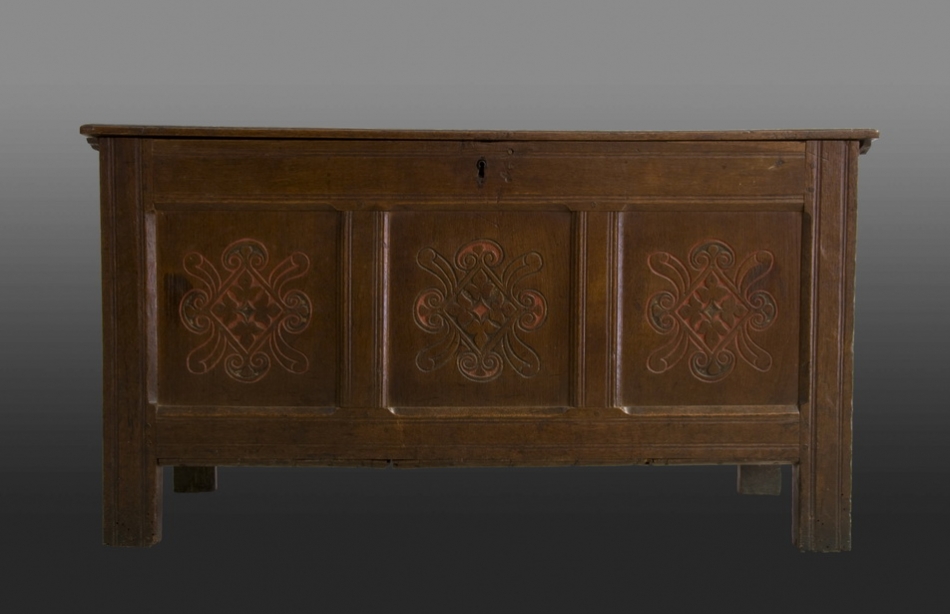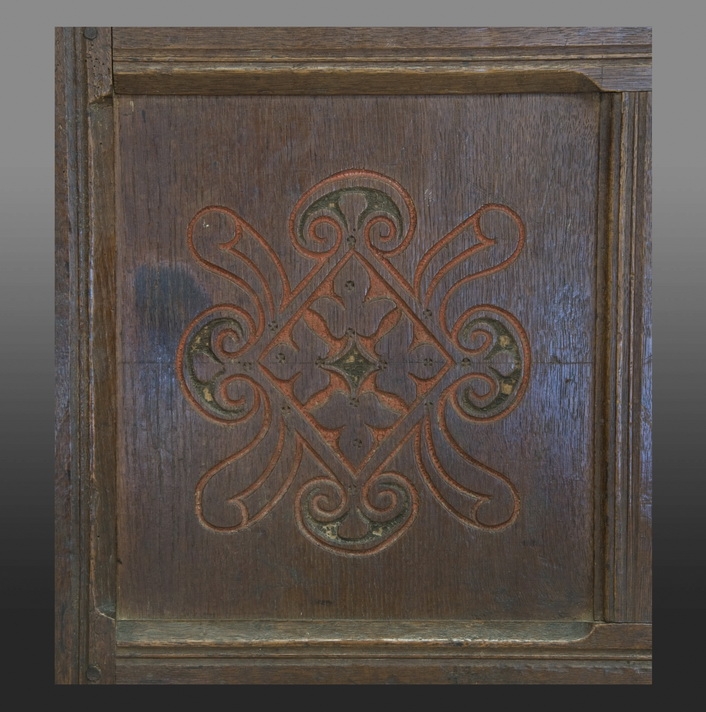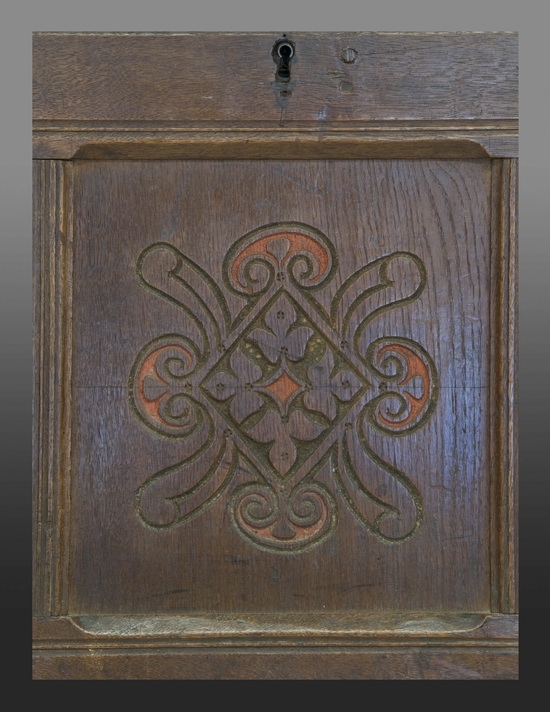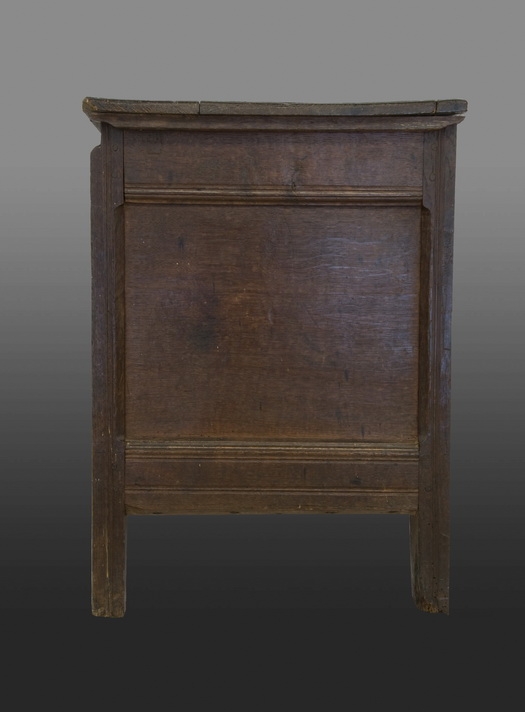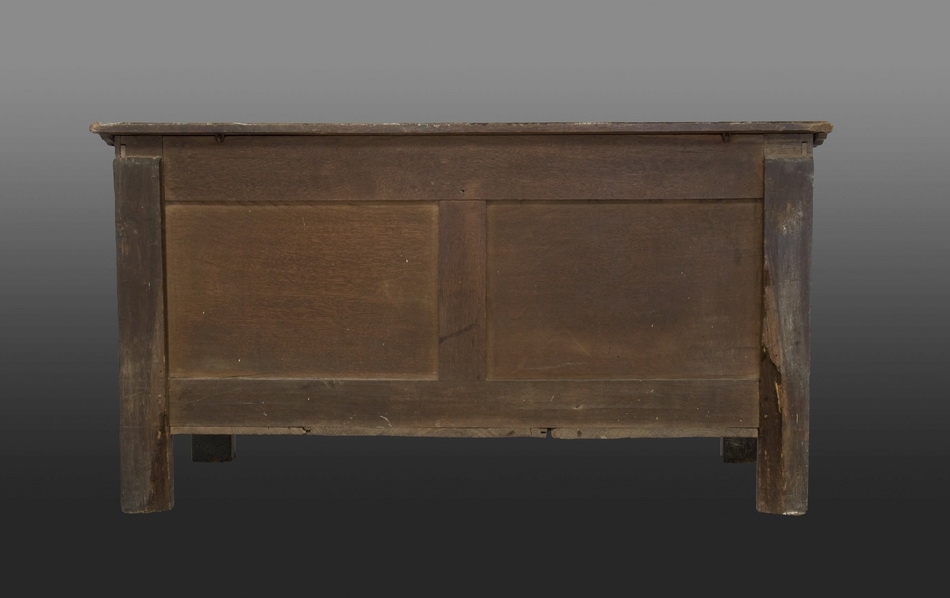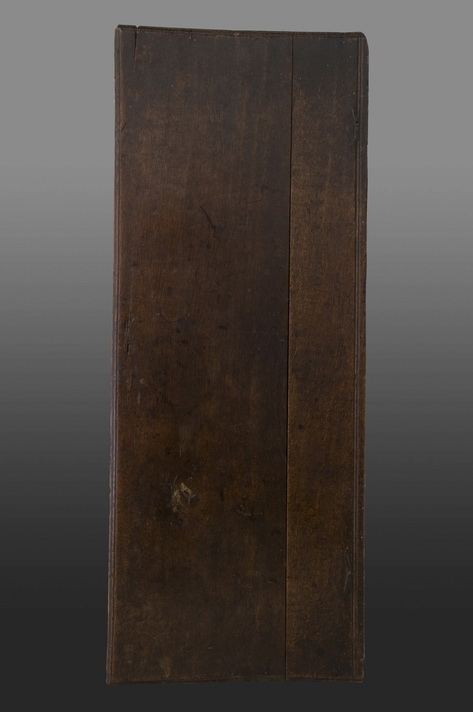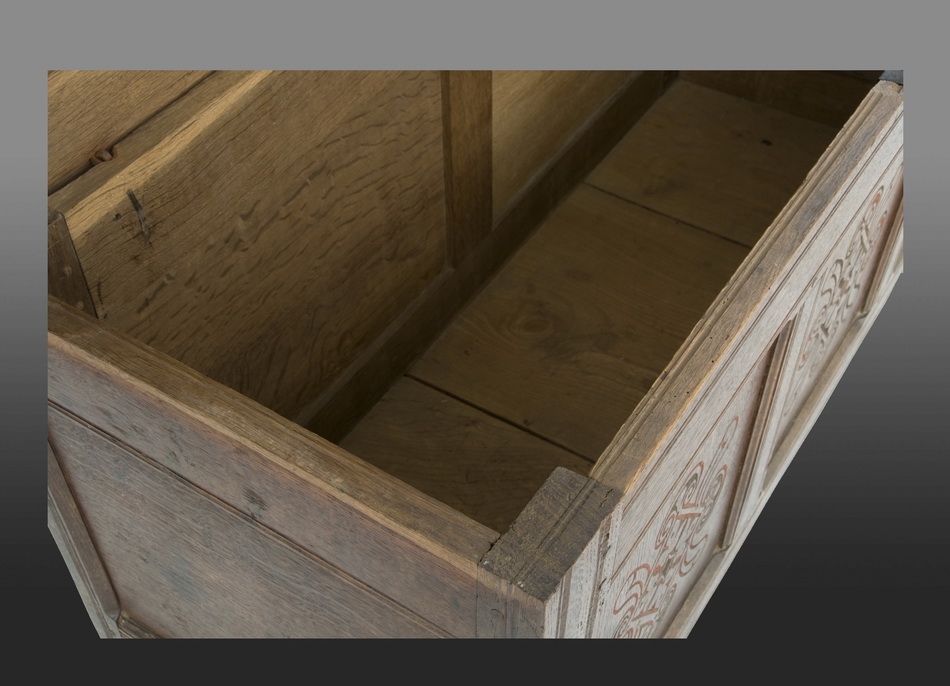Charles II East Devon chest
late 17th century
Exeter, Devon
W 45.25" × H 24.25" × D 17.75"
Stock # Ex18
SOLD
This simple but meticulously executed chest is somewhat far removed by time and economic concerns from the height of Exeter’s joinery tradition. It is likely the product of a fifth distinct hand working with the first of three later seventeenth-century Exeter joiner’s workshops. It is the work of an artisan at least three generations removed from the earlier seventeenth-century master responsible for cat. 6. The maker of this chest incorporated many design elements employed by his predecessors (cats 6-8, 13-15). Extensive use of a V-V-ogee moulding (the side profiles of the stiles, the inner edges of the side rails, the rear edge of the lid, the top profiles of all framing members and on the inner surfaces of the rear framing members), distinctive tapered cleats, panels carved with quadripartite flowerhead motif contained within a lozenge with scrolled extensions, and polychromy in red and green. Here the similarities end. Gone are the usual imposing proportions which seventeenth-century Exeter joined chests exhibit. The chest is not only diminutive in scale but its components are delicate as well. Largely absent is the rich reddish brown Devon timber, coarsely prepared and of poor quality. Save for the back stiles which employ local oak rife with now rotted sapwood, the carcass is composed from high-quality imported timber – probably of Baltic origin. The bottom boards, atypically thick and not constructed in the usual manner involving insertion in grooves and rebates, are elm. Perhaps all but the worst of local oak was too rarified and costly for use in movable furniture by the time this chest was made. Ornamental carving, although in a pattern characteristic of the first Exeter and Dennis shops, is confined only to the front panels. Despite its apparent simplicity, the chest was not cheaply or hastily constructed. It instead shows the hand of an artisan with an almost obsessive attention to detail. The structural irregularities which result from the availability of timber driving the measurements of components and the dimension of the completed object are here replaced by almost mechanical precision. This chest is not the work of an artisan in decline. It is instead the result of a late seventeenth-century joiner on the verge of transforming into something else, perhaps a cabinetmaker.
Condition Notes
Original polychromy. Small patch to area of keyhole.
